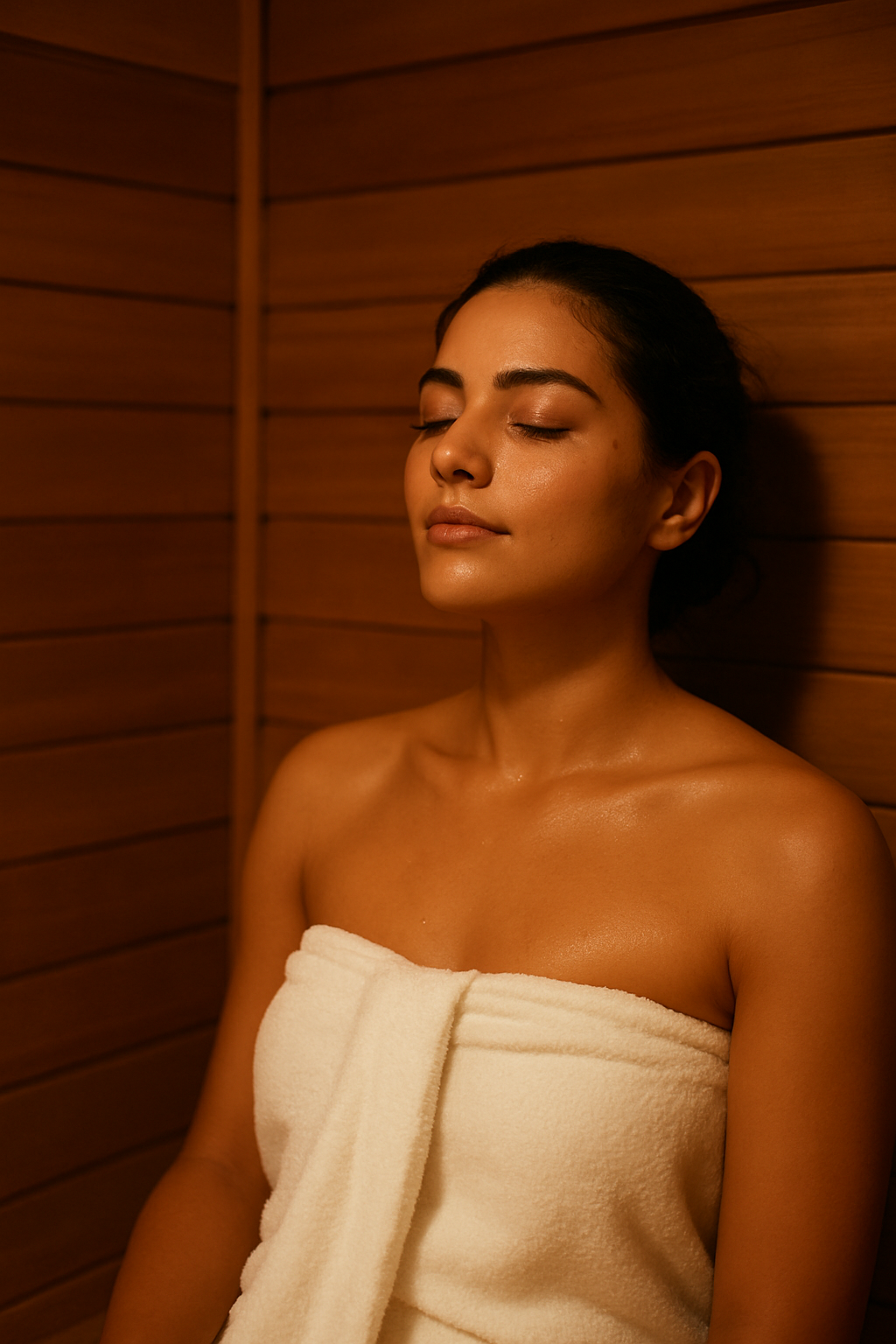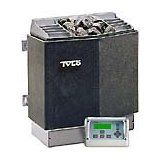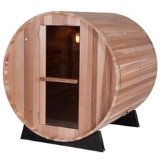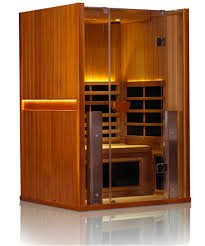Is a Sauna Good for Your Skin?

Most experts agree that a sauna is good for skin, particularly if used regularly as part of an overall skin and health care regimen. While some people may avoid using a sauna because they fear the sweating will clog pores, the opposite is actually true.
Spending time in a sauna does more than just make you sweat — it activates your body’s largest organ, the skin, to cleanse itself and rejuvenate. The intense, gentle heat increases circulation, which brings oxygen- and nutrient-rich blood to the surface. This process helps repair tissue, balance oil production, and promote that healthy, post-sauna glow many enthusiasts swear by.
As your body warms, the pores open, allowing impurities, excess oil, and dead skin cells to be released naturally. Unlike many topical treatments that only work at the surface, the sauna supports the skin’s cleansing process from the inside out.
Regular sauna use can also help your skin retain elasticity and hydration by improving microcirculation and supporting the natural renewal cycle of skin cells.
Different types of saunas may offer slightly different experiences for your skin.
- Traditional dry saunas promote deep sweating and detoxification.
- Infrared saunas penetrate the skin more deeply at lower temperatures, which some people find gentler and more comfortable.
- Steam rooms, while not technically saunas, provide higher humidity that can soothe and hydrate dry or sensitive skin.
Whether your goal is to improve your complexion, reduce breakouts, or simply give your skin a healthier tone, saunas can play a valuable role in your skincare routine when used properly and paired with good hygiene practices.
Is Sweating in a Sauna Good for Acne?
The heavy sweating you’ll produce in a sauna will open your pores and flush them out. Since acne is caused by sweat, dirt and other debris clogging your pores, a sauna is good for the skin because it effectively removes anything clogging the pores.
The sweating also removes toxins from the skin and helps destroy bacteria that can otherwise form in acne pimples, leading to inflamed or infected lesions.
The key to successfully using a sauna as an acne treatment is how you treat your skin during and after you relax in the heat. A sauna is good for getting rid of acne only as long as you thoroughly wash away the sweat on your body immediately after sauna. This washes away the old sweat and helps close the pores so they are less likely to become clogged again.
You should also consider exfoliating with a loofah or nylon scrubby after getting out of the sauna but before showering. This will loosen any dead skin cells clinging to the surface of the skin so they can be washed away before they have the chance to accumulate in pores or hair follicles.
More Ways a Sauna is Good for Skin
Getting rid of acne is the most obvious skin health benefit of using a sauna, but it’s not the only one. Increased blood circulation gives your skin more oxygen, a vital nutrient for skin cell renewal. You’ll love the tingly, flushed feeling of your skin after a half hour in a sauna.
Regular use of a sauna also increases collagen production; collagen promotes skin’s elasticity, minimizing wrinkles as you age and keeping skin supple and smooth.
After each sauna session, lightly exfoliate, shower or bathe using a mild cleansing soap and pat your skin dry. While you’re still a bit warm, moisturize your skin with a rich cream or lotion. Because your skin will still be slightly flushed, it will more readily absorb the moisturizer, keeping it soft and resilient.
After a few weeks of regular use, you’ll know the sauna is good for skin because your own skin will be glowing and healthy.
Is There Any Research To Support This?
Here are a few recent studies that support sauna's benefits for skin health:
- A controlled study of 41 healthy volunteers found that regular sauna use improved stratum corneum water-holding capacity, stabilized skin barrier function, and resulted in faster recovery of skin pH and transepidermal water loss after heat exposure.
- In a systematic review of clinical studies, regular dry sauna bathing showed potential health benefits, including indications for skin, though the authors note that higher-quality, larger-scale studies are still needed.
- There is evidence that infrared sauna may be helpful for psoriasis, although studies to date have been small and larger studies should be conducted to support mostly anecdotal evidence.
However, it's important to note that there are some risks, limits & warnings to be aware of:
- Skin dryness or irritation: Heat can strip natural oils. Overdoing it can result in tightness, flaking, or aggravation of sensitive skin.
- Sensitive skin, eczema, rosacea: These skin types may flare with heat or sweating; so caution is advised.
- Overheating & dehydration: Extended sauna use without hydration can stress the skin and body, so always make sure you are properly hydrated.
- Insufficient evidence: While promising, as we mentioned most studies are small and observational rather than definitive clinical trials.
Best Ways To Maximize Skin Benefits
Here are some quick skin-care strategies to pair with sauna use:
- Clean your skin (remove makeup, heavy oils, sunscreen) before entering the sauna.
- Use a towel to avoid sitting in sweat.
- Keep your sessions modest (start 5–10 min; 15–20 min typical upper range for most sauna users).
- Immediately rinse with lukewarm water and gentle cleanser after your sauna session is over.
- Moisturize while your skin is still slightly damp.
- Use mild exfoliants (1–2× per week; not immediately post-sauna).
- Stay well hydrated (drink water before, during, after).
- Monitor how your skin reacts over weeks; adjust accordingly.
- For sensitive or reactive skin, consult a dermatologist first.
Some Popular Questions & Answers
Q: Can sauna use worsen your acne breakouts?
A: Yes, if sweat is left on skin too long, or if harsh products are used post-sauna. Proper rinsing and moisturization help avoid this.
Q: How often should one use a sauna for skin benefits?
A: Many dermatology and wellness sources suggest 2–4 sessions per week, each lasting 10–20 minutes, as a balanced approach.
Q: Is infrared sauna better or worse for skin than traditional “hot rock” sauna?
A: Infrared heats more deeply at lower ambient temperature, often feeling gentler on skin. Some users with sensitive skin prefer that. But traditional saunas produce stronger sweating, which can maximize the flushing of pores. The choice depends on your skin sensitivity and comfort.
Q: Will sauna help fade scars or dark spots?
A: Indirectly, perhaps — by improving circulation, promoting healthier skin repair, and supporting collagen. But saunas are not a targeted scar treatment. Talk to your dermatologist first before using the sauna to treat any skin conditions.
Q: Can saunas cause skin cancer?
A: Current evidence does not support that sauna use causes skin cancer. Infrared saunas, when used moderately, are not known to increase skin-cancer risk.
What's the Bottom Line?
While the benefits of sauna bathing for the skin are supported by emerging research, it’s worth remembering that individual results can vary. Factors such as your skin type, hydration levels, frequency of sauna use, and even the type of sauna — traditional dry, infrared, or steam — can all influence how your skin responds. Some people notice softer, more luminous skin within a few sessions, while others experience gradual improvements as their body adjusts to the routine.
To get the most from your sauna sessions, consistency matters more than intensity. A few shorter sessions each week tend to be more beneficial than occasional long ones.
Pair your sauna routine with dermatologist-approved skincare practices: cleanse your skin before entering, rinse immediately afterward, and moisturize while your skin is still slightly warm and receptive. Proper hydration before and after each session is also key to maintaining skin elasticity and balance.
It’s equally important to listen to your skin’s feedback. If you notice dryness, redness, or irritation, scale back your time or try an infrared sauna, which operates at lower temperatures and may be gentler. For individuals with eczema, rosacea, or very sensitive skin, consulting a dermatologist before regular sauna use is a wise step to avoid any issues.
When used thoughtfully, the sauna becomes more than just a heat experience — it’s a tool for nurturing your skin’s natural renewal process. Over time, you may notice fewer breakouts, improved tone, and a healthy, sustained glow that reflects better circulation and overall wellness.
For many, these results reaffirm what experts have long believed: that the sauna, when used wisely, is one of nature’s most effective and enjoyable ways to support healthy, radiant skin.
Infrared Saunas
Sauna Heaters

How to Install a Wood Sauna Heater
Sauna Kits

Buying Guide




